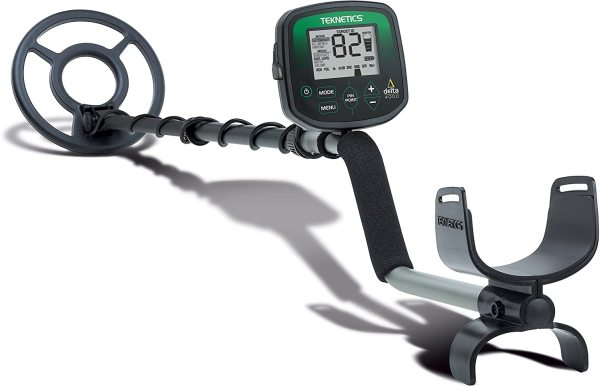Metal detector is an electronic device that can detect many different types of metals, including aluminum, gold and lead by passing them through a coil or loop antenna in which they induce an electric current. The metal detects are typically used for prospecting (finding valuable minerals), treasure hunting, archaeology and industrial use – especially around construction sites where safety is important as employees work with heavy machinery like forklifts or cranes.
Table of Contents
3 Main Different Types of Metal Detectors

Very Low Frequency (VLF) Metal Detectors
VLF metal detectors are the most common type of detector, and they work by sending out a pulse that is either reflected off or conducts through an object containing metal. The device then measures how long it takes for the signal to return.
The major benefits to using VLF detectors are their ability to pinpoint targets more precisely and identify specific metals like copper or zinc at 200 feet away from the detector when set on low sensitivity modes thanks to sending out magnetic waves rather than just conducting electricity.
Low-frequency instruments also have an advantage over high frequency ones in sand which can create false positives for metal objects buried deep below the surface, since those waves travel through water better than higher frequencies do.
Multi-Frequency Metal Detectors
Metal detectors, due to their single frequency limitation, are inadequate on their own. To circumvent this inadequacy, multi-frequency models were developed.
These metal detectors can use multiple frequencies simultaneously to detect metal. The frequencies are measured in megahertz, or MHz (mega cycles per second). Multi-frequency models use a total of three detection modes:
Narrow frequency range is used to find specific metals like copper at distances up to 200 feet away from the detector with extreme accuracy and sensitivity; wide frequency ranges for general scanning purposes – typically set on higher sensitivities than narrow frequency ranges; pulsed mode which allows for better performance when working around other electrical devices such as motor vehicles.
The number of frequencies you need depends on your needs. For example, if you’re looking specifically for coins then a single frequency might work best since it will be sensitive enough to pick that metal out amongst any other junk buried below ground. If you’re looking for all metals then a wide frequency will be best as it provides the most coverage.
Pulse Induction Metal Detectors
Pulse Induction (PI) metal detectors detect items by transmitting and receiving electrical currents to determine when an item is located. The width of the pulses and how they break down determines what type of metal is detected.
Pulse Induction detectors are great for finding small, deeply buried items such as coins or jewelry in a large area. This detector works best on wet ground where conductivity is at its highest however it can work with dry dirt but will need to be set to a higher sensitivity level which means you’ll have an increased chance of false positives from non-metallic objects; this mode also has trouble passing through materials that may contain water, like stone walls.
Pulse induction detectors give off more electromagnetic interference than other types so don’t use them near high traffic areas (i.e., airports) or close to electrical sources (power lines, substations). These are good tools for finding gold and hunting on the beach. They are very specific to this.
Other Types of Metal Detectors
Metal detectors are a great tool for security and various other purposes. They can detect metal objects from up to 35 feet away, depending on the type of detector used. Besides categorizing metal detectors in 3 previous mentioned types based on frequency, we can divide them into three types based on usage: coin, jewelry, and personal use.
- Personal Use Metal Detectors: Personal use metal detectors are designed for individual, personal use. These models typically have a short range and can detect smaller objects than the other types of metal detectors. They generally cost less money because they only need to be used by one person.
- Coin Finders: Coin finders usually detect larger metals (usually coins) up to 12 inches deep in sandy or mineralized soil at distances of over 30 feet away from the detector when it is on high sensitivity mode. They’re often much cheaper than jewelry scanners, but must still be used with caution while detecting around people’s heads due to their lower frequency capability which may allow them to pick up more noise interference near peoples’ ears as well as those who might be carrying a pacemaker or other electronic device.
- Jewelry Detectors: These metal detectors are more expensive than coin finders and typically have a longer range of detection. They’re often used at fairs, flea markets, auctions, parks and beaches for finding jewelry that has been lost in the grass or sand. Jewelry scanners can detect larger objects like rings and earrings as well as coins deep in mineralized soil at distances up to 50 feet away from the detector when it is on high sensitivity mode.
There is metal detector dog as well. This type of metal detector is generally only used by professionals who train dogs with an innate ability to identify metals based on smell alone – they do not use a metal detector to find the object.